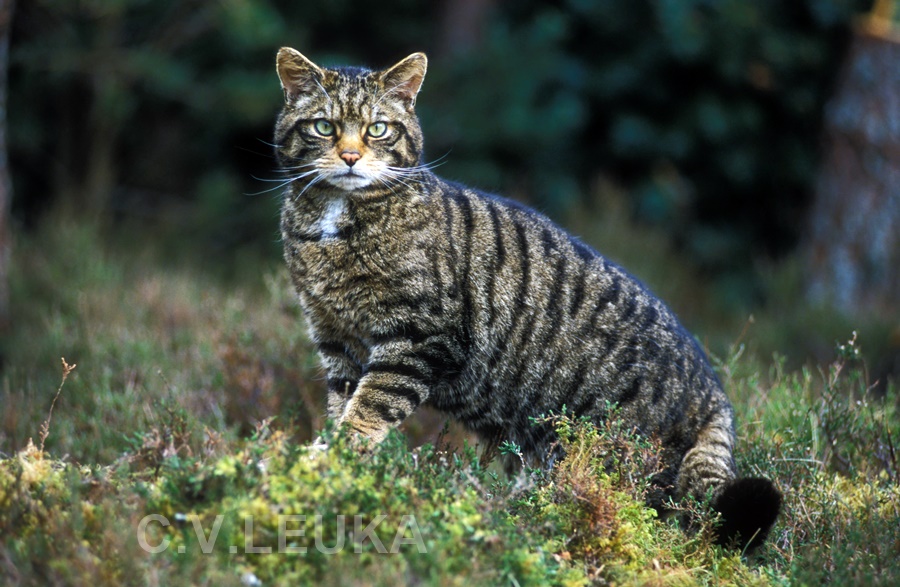Wild cat: Red Data Book of Armenia

Cats - Felidae
Status. Listed in the IUCN Red List of Threatened Species (ver. 3.1) as Least Concern. According to IUCN criteria categorized as Vulnerable VU B1ab(iii,iv).
Distribution. The species is distributed in Europe, Asia and Africa. The range of this subspecies is confined to Europe.
Distribution in Armenia. Occurs in the Ararat, Vayots Dzor, Syunik, Tavush and Lori provinces at 700–2500 m above sea level. Possibly, also penetrates to the Kotayk and Gegharkunik provinces.
Habitats. Broadleaf forests and arid sparse forests, with an essential presence of sufficient food base (rodents, birds) and secluded out–of–the–way places.
Biological traits. Mating occurs in February–March. Three to eight, usually 4–5, cubs are born in April–May.
Population size and its trends. Unknown, but likely stable. It is essential to estimate the population size and to study ecology of the wild cat in Armenia.
Major threats. The wild cat is threatened by hybridisation with domestic, especially feral, cats and competition with the African wild cat (F.s. lybica). Undertaking relevant research is essential.
Conservation measures. Protected in Khosrov Forest Reserve, Shikahogh Reserve, Dilijan National Park, Arevik National Park and some sanctuaries. It is essential to strengthen control over human activities in broadleaf and arid sparse forests (deforestation, road construction and others) and to regulate the numbers of feral cats.
Suggestions
 The Ministry of Environment sent a letter international partners to draw their attention to the real danger of environmental disasters as a result of Azerbaijan's large-scale aggression towards the territory of Armenia
The Ministry of Environment sent a letter international partners to draw their attention to the real danger of environmental disasters as a result of Azerbaijan's large-scale aggression towards the territory of Armenia
 Vicia pisiformis: Red Data Book of Armenia
Vicia pisiformis: Red Data Book of Armenia
 Vavilovia formosa: Red Data Book of Armenia
Vavilovia formosa: Red Data Book of Armenia
 Trigonella capitata: Red Data Book of Armenia
Trigonella capitata: Red Data Book of Armenia
 Trigonella astroides: Red Data Book of Armenia
Trigonella astroides: Red Data Book of Armenia












